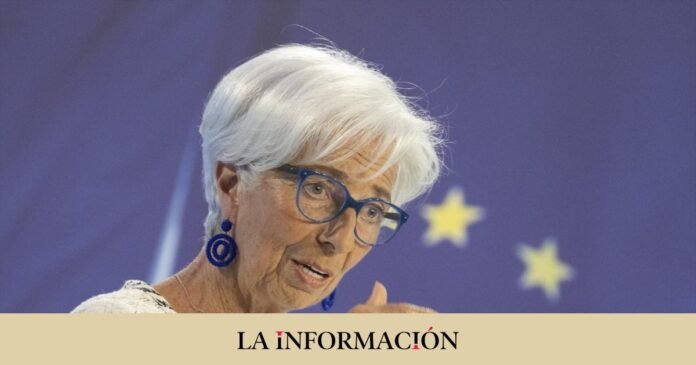The request for loans and lines of credit by companies sank during the second quarter to a record low as a result of the rise in interest rates and the collapse of investment. This is reflected in the survey of bank loans carried out by the European Central Bank (ECB) and reported by Europa Press. The European anticipates a new drop in the data during the third quarter, although of less intensity.
Between April and June, the net demand for loans from euro area companies decreased considerably, with a net percentage of -42%, compared to -38% in the previous quarter, implying a record low since the start of the ECB survey in 2003.
In fact, the observed fall was “substantially stronger than expected by the banks in the previous quarter,” according to the study by the central bank, whose Governing Council will meet again this Thursday to determine the monetary policy of the euro zone, with a safe rise of 25 basic points in interest rates.
Net decrease in demand for loans
According to the survey, the net decline in loan demand was the strongest since the start of the time series in 2003 for SMEs, while the net decline in loan demand by large corporations remained slightly more limited than during the global financial crisis.
In addition, the net decline in demand was also the strongest in the history of the study for long-term loans, while demand for short-term loans turned out to be less, but still near the record low recorded during the global financial crisis.
“The rise in interest rates and the decline in fixed investment continued to be the main drivers of the net decline in loan demand,” the central bank notes, adding that other factors behind the slump in demand were lower funding needs for mergers and acquisitions, available domestic funding with better profits achieved, and, to a lesser extent, the issuance of debt securities.
“Rise in rates and decline in fixed investment continued to be the main drivers of demand”
In any case, the ECB highlights that, for both SMEs and large companies, the general level of interest rates and the lower financing needs of companies for fixed investment were the main drivers of the reduction in the demand for loans in the quarter.
The figures by countries
By country, the study found that the drop in demand for business loans reached considerable levels in the four largest economies in the euro zone. In line with the euro area aggregate, higher interest rates and lower fixed investment financing needs were the main drivers of this reduction in loan demand in all four countries.
In addition, lower M&A activity also had a notable negative impact on loan demand in the four largest countries. Looking ahead to the third quarter of the year, euro area banks expect a further net decline in the demand for business loans, but much less than in the second quarter.
However, the ECB notes that, since the end of 2022, banks have tended to have “overly positive” expectations for loan demand, suggesting that expectations for the third quarter could also be overly optimistic. In this sense, the entities expect the rate of decrease in credit to be less intense for both short-term and long-term credit demand in the third quarter.

